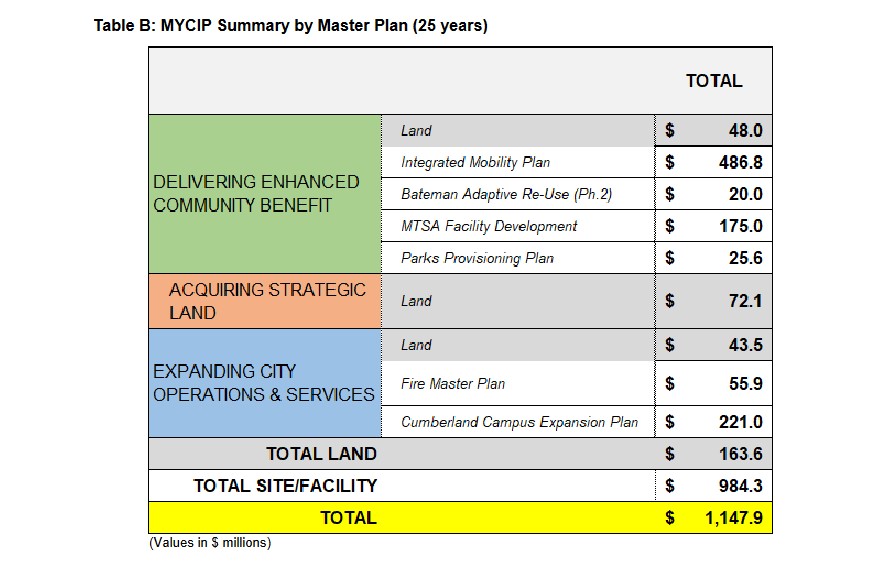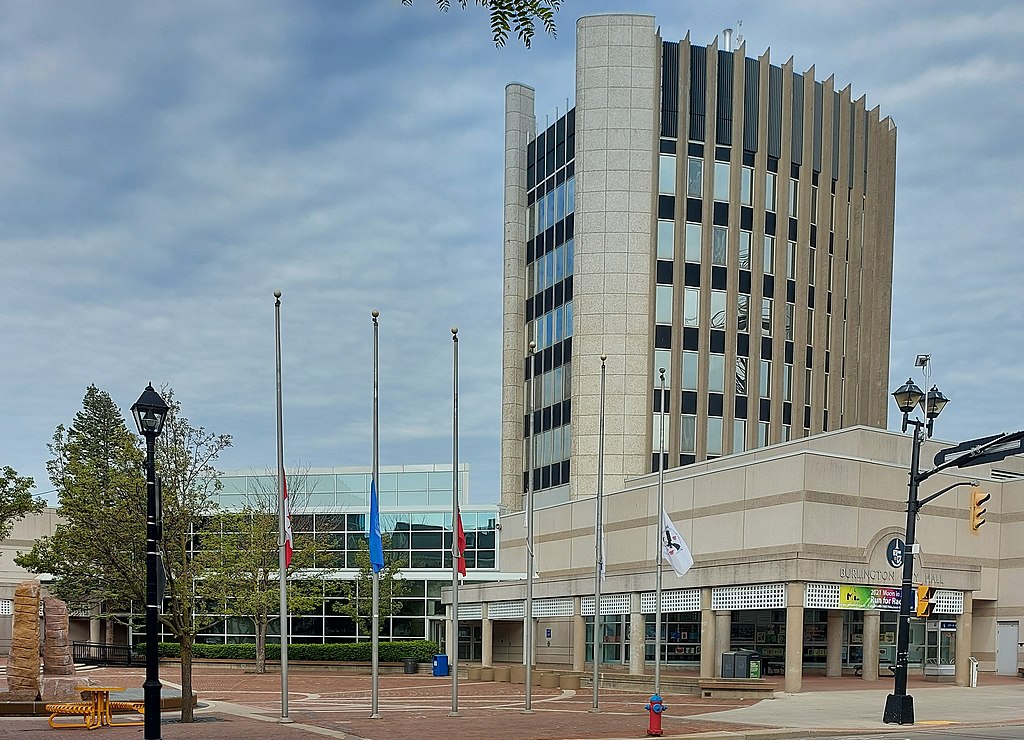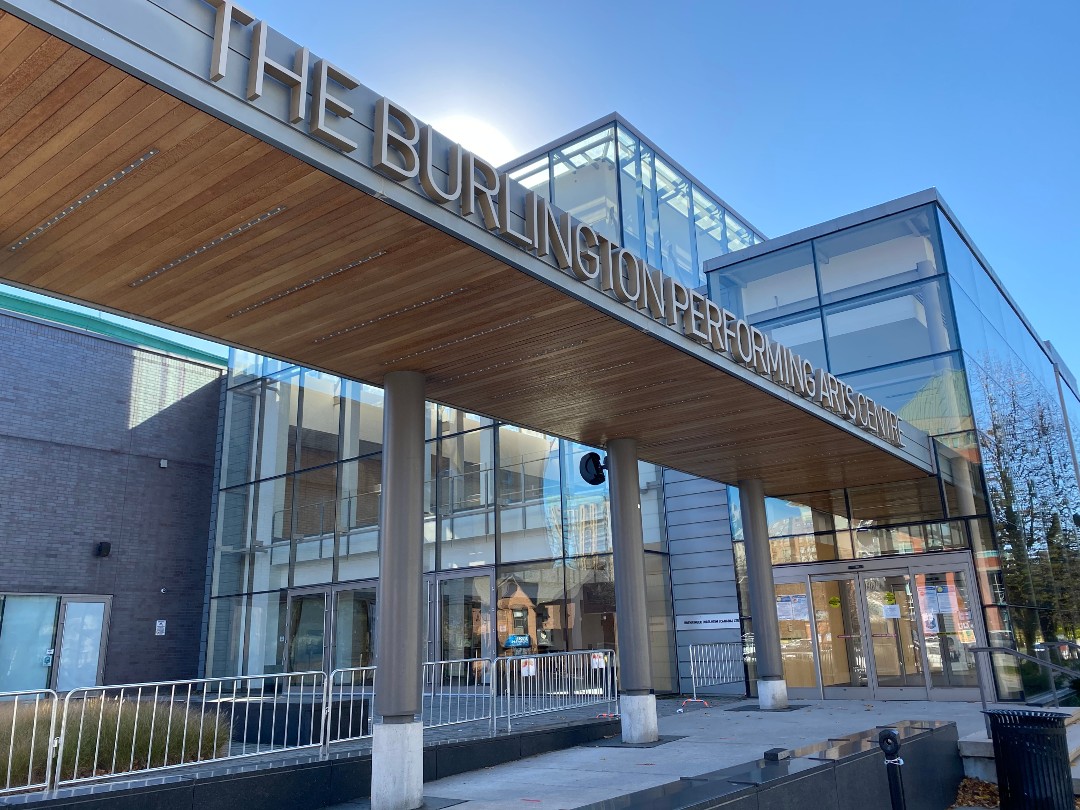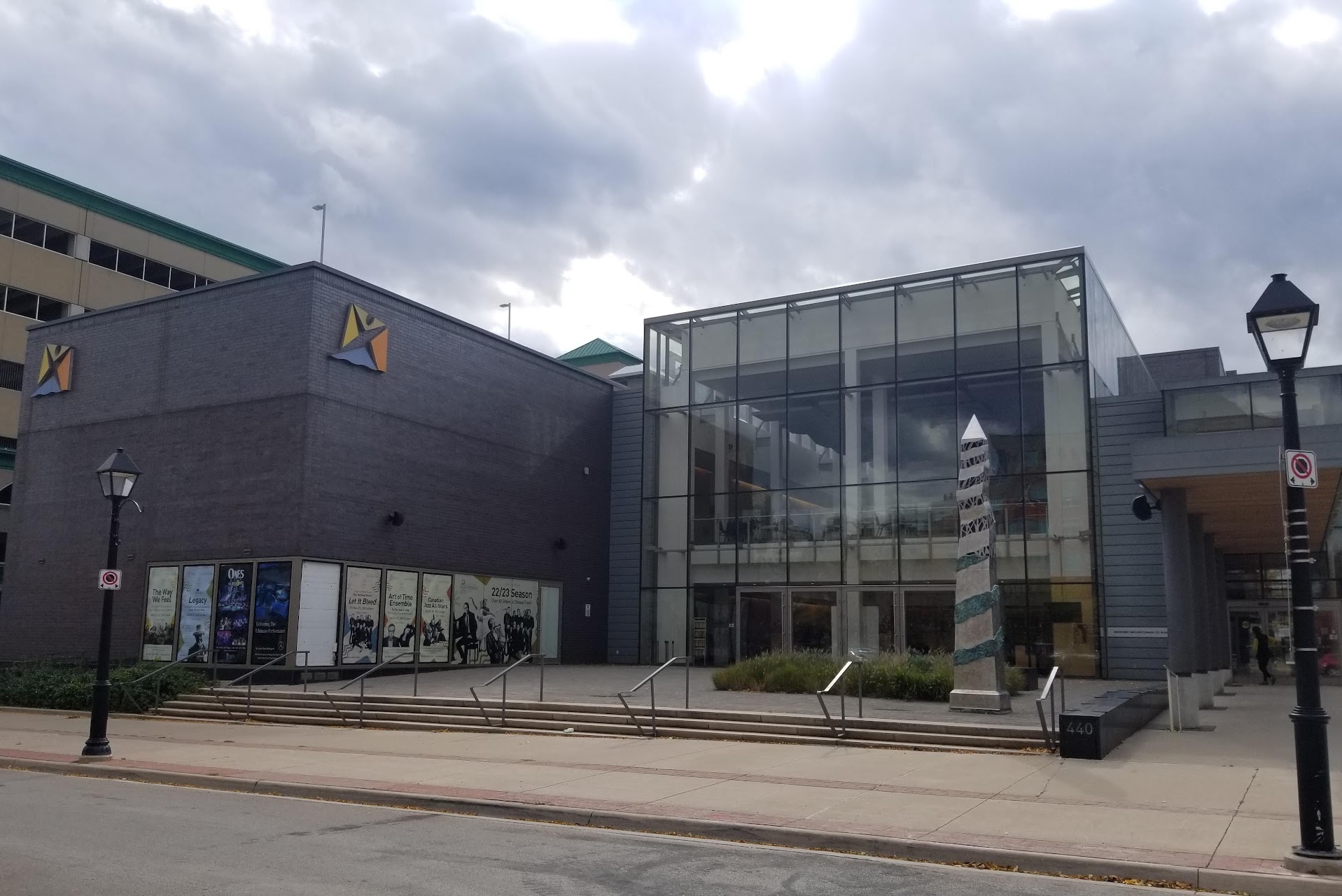There are a fewer-than-normal number of agenda items due to be discussed at the next Committee of the Whole (COW) meeting, but three items may have a huge impact on how the city looks down the road.
And if you were shocked by your latest property tax installment, perhaps you shouldn’t watch on June 10.
Report no. F-24-24 from the finance department presents a 10-year forecast on the city’s financial strategy (read: spending) for the capital budget expenditures. The initial phase of the Multi-Year Community Investment Plan (MYCIP) was provided to council in April 2022 (Phase 1).
The MYCIP is a long-term plan (25 years) that provides investment for community benefit, related to park development, recreation and cultural facilities, and site amenities. It also looks at the expansion of city operations and services: this is related to efficient and effective delivery of direct city services and strategic land acquisition; and to future land investments for city parkland needs and other non-park-related land priorities to support growth in the Burlington community.
Phase 2 of the MYCIP is heavily tilted towards initiatives such as transportation modes contained in the Integrated Mobility Plan endorsed earlier by council (priced at $119 million). Other big-ticket items in MYCIP include the acquisition of land to the tune of $126.5 million, Major Transit Station Area (MTSA) development ($175 million), and the Cumberland operations building expansion ($129 million). The plan also sees a sprinkling of funds to go towards the Robert Bateman Community Centre ($20 million), park provisioning ($25 million), and the Fire Master Plan, for two new stations, revitalization of another, relocation of a fourth, and equipment for others ($54 million).
For a grand total of $650,685,704 over the next ten years.
Here’s a graphic that bumps out the projections over the full MYCIP 25-year period.

To cover these capital costs, the city has previously approved base funding of $975,871 (per year). Now staff are recommending increasing the base to $1 million as part of the 2025 budget and assigning $7 million of non-tax supported debt.
Staff also hope that development charges (yes, the ones council reduced last month), will bring in $150 million.
This, of course, does not include grants, donations, incentives, etc., from the federal and provincial governments.
Report F-24-24 also notes some other items that the city may be thinking about adding to the capital expenditures list:
- the Live and Play Plan, which is coming forward to council in June 2024 with subsequent reporting on costing and priorities (item 11.1 at COW meeting; more on that in a subsequent article);
- the Transit Business Plan; they will consider capital infrastructure related to electrification and future technology that presently is beyond what is included in the 2024 capital budget and forecast;
- Vision to Focus (V2F), 2022–2026, which provides a work plan for delivering on the city’s strategic objectives aligning with the four focus areas;
- Future parkland needs, which is aligned with the parkland requirements in the Parks Provisioning Master Plan (PPMP), and are not included beyond the ten-year time frame as it is difficult to ascertain specific projects beyond this period;
- the housing pledge, which demonstrates the city’s commitment to accelerate the housing supply of 29,000 units by 2031.
On the operational side of things, we turn to report F-25-24 for financial needs and a multi-year forecast. The report lists several sources of funding/taxation.
To save time, here’s a graphic showing the potential impact on your future property tax bills.

These two reports are the start of the 2025 budget process for the city. The mayor must deliver the budget, as per the Strong Mayors powers, by February of 2025 but, like last year, council hopes to wrap things up by the end of 2024. Public engagement begins August of 2024.
The 2024 budget, for capital ($88.6 million) and operating ($350 million), was $438.6 million.
We’ll leave the last word to the “Engagement Matters” section of F-25-24.
“The City will continue to inform the public and seek its feedback through a dedicated Budget 2025 page on GetInvolvedBurlington.ca. Our engagement portal allows staff to engage with residents and interested parties using tools such as surveys, polls, FAQs, timelines and the document library.”
“In addition, a Community Panel will launch in the coming months, giving community members the opportunity to be engaged on topics and projects aligned with their skills and experiences. The 2025 Budget would be a key topic for this panel.”
“Staff are creating a survey to be launched this summer, and a Budget Townhall [sic] is in development for Nov. 6, 2024. Other engagement opportunities will be shared as they are confirmed. The results of all public engagement will be reported back to Council as part of the Mayor’s Proposed Budget and in advance of the budget review process.”
“The Open Book platform will be used to present the budget and allow the public to view the budget data in an interactive and intuitive format.”
“A communications plan will also be developed in conjunction with the presentation of the Proposed Budget. This plan will inform the public about key aspects of the budget, how to learn more about it and opportunities to engage with staff and Council.”
Burlington, it’s up to you to let your voice be heard.





